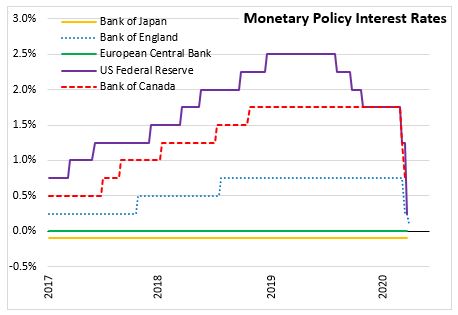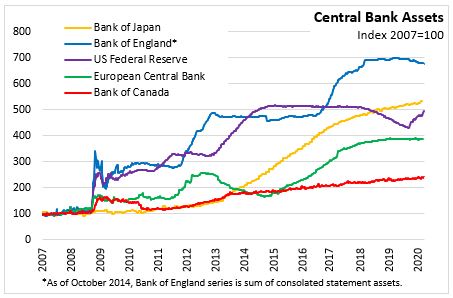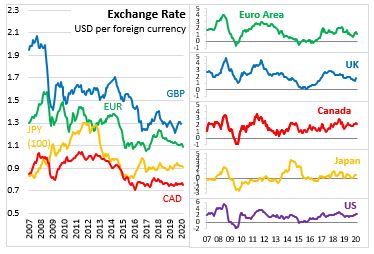The Economics and Statistics Division maintains archives of previous publications for accountability purposes, but makes no updates to keep these documents current with the latest data revisions from Statistics Canada. As a result, information in older documents may not be accurate. Please exercise caution when referring to older documents. For the latest information and historical data, please contact the individual listed to the right.
<--- Return to Archive
For additional information relating to this article, please contact:
March 19, 2020BANK OF JAPAN MONETARY POLICY The Policy Board of the Bank of Japan announced that it will maintain the negative interest rate of -0.1 per cent on balances of financial institutions at the Bank. The Bank further provided updated forward guidance that short-term interest rate will be -0.1 per cent and long- term interest rates will remain at zero percent to remain at lower as long as is necessary to guard against the possibility of losing momentum towards the price stability target.
Due to COVID-19 the Bank of Japan decided to enhance monetary easing through the further ample supply of funds by conducting various operations including purchases of Japanese government bonds (JGBs) and the U.S. dollar funds-supplying operations. Other new measures are taken to facilitate corporate financing including the introduction of a new operation, and active purchases of exchange-traded funds (ETFs) and Japan real estate investment trusts (J-REITs).
The Bank will provide more ample funds by purchasing JGBs and through other operations. US dollar liquidity will increase with the coordination of other International Banks by lowering the loan rate 0.25 per cent and offer US dollars weekly with 84-day maturity. The Bank introduced a new operation to provide loans against corporate debt (of about 8 trillion yen as of end-February 2020) as collateral at the interest rate of 0 percent with maturity up to one year. The Bank increased the upper limit to purchase CP and corporate bonds by 2 trillion yen in total and conduct purchases with the upper limit of their amounts outstanding of about 3.2 trillion yen and about 4.2 trillion yen, respectively. The new operation and additional purchases will be conducted until the end of September 2020. The Bank decided to actively purchase ETFs and J-REITs and their amounts outstanding will increase at annual paces with the upper limit of about 12 trillion yen and about 180 billion yen, respectively.
The Bank will continue its purchases of Japanese Government Bonds in order to keep 10-year yields at around zero per cent, though yields may move up and down depending on economic activity and prices. These bond purchases will be flexible, with amounts outstanding rising by about 80 trillion yen per year.
The Bank of Japan is continuing with its policy of "Quantitative and Qualitative Monetary Easing (QQE) with Yield Curve Control", with the aim to achieve price stability target of 2 per cent, as long as is necessary for maintaining the target in stable manner. The monetary base will continue to expand until the year-on-year rate of increase in the consumer price index (CPI, all items less fresh food) exceeds 2 per cent and stays above the target in stable manner. The Bank will closely monitor the impact of COVID-19 for the time being and will not hesitate to take additional easing measures if necessary.
The economic outlook for Japan indicates that the economy is expected to remain weak for the time being, mainly affected by the outbreak of COVID-19. The Bank expects that the economy will return to a moderate expanding trend, supported by a virtuous cycle from income to spending, mainly due to the measures taken by each country. Inflation is projected to decline towards 0.5 to 1.0 percent. The Bank of Japan noted that risks are mainly skewed to the downside because of particular developments in overseas economies and uncertainties over medium- and long-term inflation expectations.




Source: Bank of Japan's Statement on Monetary Policy
<--- Return to Archive